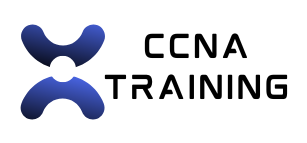The Zero Trust security model is a modern approach to cybersecurity that has gained prominence in recent years. It addresses the limitations of traditional perimeter-based security models, which are no longer adequate in today’s complex threat landscape. The core principle of Zero Trust is “never trust, always verify,” meaning that no user or device should be automatically trusted, regardless of their location or network status.
In a Zero Trust framework, access control is determined by multiple factors, including user identity, device health, location, and resource sensitivity. This multi-faceted approach helps prevent unauthorized access and limits lateral movement within networks, thereby increasing the difficulty for attackers to compromise sensitive data. Continuous monitoring and enforcement of security policies are crucial components of the Zero Trust model.
This ensures that access privileges remain aligned with organizational security requirements at all times. By implementing Zero Trust principles, organizations can enhance protection of their critical assets and data against both internal and external threats, ultimately reducing the risk of data breaches and other security incidents.
Key Takeaways
- Zero Trust Security Model is based on the principle of not trusting any entity inside or outside the organization’s network perimeter.
- Assess your current security infrastructure to identify any gaps or weaknesses that need to be addressed for implementing the Zero Trust Security Model.
- Identify and classify your assets to understand their value and the level of protection they require under the Zero Trust Security Model.
- Define access policies and segmentation to ensure that only authorized users have access to specific resources and to limit the potential impact of a security breach.
- Implement multi-factor authentication to add an extra layer of security and verify the identity of users accessing the network or sensitive data.
- Monitor and enforce the Zero Trust Security Model to ensure compliance with access policies and to detect and respond to any security incidents in real-time.
- Continuously improve and adapt the Zero Trust Security Model to address evolving threats and changes in the organization’s infrastructure and security requirements.
Assessing Your Current Security Infrastructure
Evaluating Technical Controls
This assessment should include a comprehensive review of existing security controls, such as firewalls, intrusion detection systems, and access control mechanisms, to determine their effectiveness in preventing unauthorized access and detecting potential security threats.
Assessing Network Architecture and Data Flows
Organizations should also evaluate their network architecture and data flows to understand how users and devices interact with critical assets and identify potential points of vulnerability.
Reviewing Security Policies and Procedures
In addition to technical controls, organizations should also assess their security policies and procedures to ensure that they align with the principles of Zero Trust. This includes reviewing user access privileges, authentication mechanisms, and data classification schemes to determine whether they adequately support a Zero Trust security model. By conducting a thorough assessment of their current security infrastructure, organizations can gain valuable insights into areas that require improvement and develop a roadmap for implementing Zero Trust principles effectively.
Identifying and Classifying Your Assets

One of the fundamental principles of the Zero Trust security model is the need to identify and classify all assets within the organization’s environment. This includes not only traditional IT assets such as servers, databases, and applications but also data assets such as sensitive customer information, intellectual property, and financial records. By understanding the value and sensitivity of each asset, organizations can make more informed decisions about access control and data protection measures.
Asset classification involves categorizing assets based on their importance to the organization and the level of risk associated with their compromise. For example, assets that contain sensitive customer data or trade secrets may be classified as high-risk, while assets that are less critical to the organization’s operations may be classified as low-risk. By classifying assets in this way, organizations can prioritize their security efforts and allocate resources more effectively to protect their most valuable and sensitive assets.
In addition to classifying assets based on their value and risk, organizations should also consider the context in which assets are accessed and used. For example, assets that are accessed from untrusted networks or devices may require additional security controls compared to assets that are accessed from within the corporate network. By taking a contextual approach to asset classification, organizations can tailor their access policies and segmentation strategies to better align with the specific security requirements of each asset.
Defining Access Policies and Segmentation
Once assets have been identified and classified, organizations can begin to define access policies and segmentation strategies based on the principles of Zero Trust. Access policies should be designed to enforce the principle of least privilege, which means that users and devices should only be granted access to the resources they need to perform their specific roles and responsibilities. This minimizes the risk of unauthorized access and reduces the potential impact of a security breach.
Segmentation involves dividing the network into smaller, isolated segments to contain potential security threats and limit lateral movement within the network. This can be achieved through network segmentation technologies such as virtual LANs (VLANs), firewalls, and micro-segmentation solutions that restrict communication between different parts of the network. By implementing segmentation, organizations can reduce the attack surface and make it more difficult for attackers to move laterally within the network if they gain unauthorized access.
Access policies and segmentation strategies should be based on a thorough understanding of asset classification and the specific security requirements of each asset. By aligning access controls with asset sensitivity and context, organizations can ensure that their security measures are both effective and practical for their unique environment.
Implementing Multi-Factor Authentication
Multi-factor authentication (MFA) is a critical component of the Zero Trust security model, as it provides an additional layer of security beyond traditional password-based authentication methods. MFA requires users to provide multiple forms of verification before they can access a resource, typically something they know (such as a password), something they have (such as a mobile device or smart card), or something they are (such as a fingerprint or facial recognition). By implementing MFA, organizations can significantly reduce the risk of unauthorized access, even if an attacker has obtained a user’s password through phishing or other means.
MFA makes it more difficult for attackers to compromise user accounts and gain access to sensitive resources, ultimately enhancing the overall security posture of the organization. In addition to enhancing security, MFA also provides organizations with greater visibility into user authentication attempts and can help detect potential security threats such as account takeover attempts or unauthorized access. By monitoring MFA events and enforcing strong authentication requirements, organizations can better protect their critical assets from a wide range of potential threats.
Monitoring and Enforcement

Monitoring User Behavior
Monitoring user and device behavior helps detect potential security threats by identifying anomalous activities, such as unauthorized access attempts or unusual data transfer patterns. By analyzing user behavior in real-time, organizations can quickly detect potential security incidents and take appropriate action to mitigate the risk.
Enforcement of Access Controls
Enforcement involves applying access controls based on the organization’s security policies and responding to potential security threats in a timely manner. This may include automatically revoking access privileges if suspicious activity is detected or requiring additional verification steps before granting access to sensitive resources.
Reducing the Risk of Unauthorized Access
By enforcing access controls based on real-time security intelligence, organizations can reduce the risk of unauthorized access and better protect their critical assets from potential security threats. This proactive approach ensures that access privileges are always aligned with the organization’s security requirements, providing an additional layer of protection for sensitive resources.
Continuous Improvement and Adaptation
The Zero Trust security model is not a one-time implementation but rather an ongoing process that requires continuous improvement and adaptation to address evolving security threats. Organizations should regularly review their access policies, segmentation strategies, and authentication mechanisms to ensure that they remain effective in mitigating current and emerging security risks. Continuous improvement involves evaluating the effectiveness of existing security controls and identifying areas for enhancement based on changes in the threat landscape or the organization’s business requirements.
This may involve updating access policies to reflect changes in asset classification or implementing new segmentation strategies to address emerging security threats. Adaptation involves being proactive in response to new security threats by adjusting access controls and authentication mechanisms to mitigate potential risks. This may involve implementing new security technologies or enhancing existing controls to address specific vulnerabilities or attack vectors.
By embracing continuous improvement and adaptation, organizations can ensure that their Zero Trust security model remains effective in mitigating a wide range of potential security threats and supports their overall business objectives. In conclusion, the Zero Trust security model represents a fundamental shift in how organizations approach cybersecurity by emphasizing continuous verification of user identity and device health before granting access to resources. By understanding this model, assessing current security infrastructure, identifying assets, defining access policies and segmentation, implementing multi-factor authentication, monitoring and enforcing policies, and continuously improving and adapting security measures, organizations can better protect their critical assets from a wide range of potential threats.
Embracing the principles of Zero Trust can help organizations enhance their overall cybersecurity posture and reduce the risk of data breaches and other security incidents in today’s complex threat landscape.
For more information on implementing Cisco’s Zero Trust Security Model, check out this article on Cisco’s New Routers Revolutionize Networking. This article explores how Cisco’s new routers are changing the game in networking and how they can be integrated into a Zero Trust security model to enhance network security.
FAQs
What is Cisco’s Zero Trust Security Model?
Cisco’s Zero Trust Security Model is a security framework that assumes all networks, devices, and users are untrusted, and it requires strict identity verification for anyone trying to access resources on the network.
What are the key principles of Cisco’s Zero Trust Security Model?
The key principles of Cisco’s Zero Trust Security Model include verifying the identity of all users and devices, limiting access to only necessary resources, and continuously monitoring and analyzing network traffic for potential threats.
How does Cisco’s Zero Trust Security Model differ from traditional security models?
Traditional security models typically rely on perimeter-based defenses, while Cisco’s Zero Trust Security Model focuses on securing individual resources and verifying the identity of users and devices regardless of their location.
What are the benefits of implementing Cisco’s Zero Trust Security Model?
Some of the benefits of implementing Cisco’s Zero Trust Security Model include improved security posture, reduced risk of data breaches, better visibility and control over network traffic, and the ability to adapt to changing business needs and security threats.
What are the steps involved in implementing Cisco’s Zero Trust Security Model?
The steps involved in implementing Cisco’s Zero Trust Security Model include defining the security policy, identifying and classifying resources, implementing access controls, integrating security technologies, and continuously monitoring and adapting the security posture.













